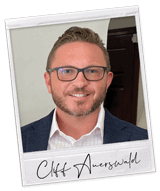
America’s #1 Rated Reverse Lender

 |
ARLO™REVERSE MORTGAGE
ASSISTANT |
Reverse Mortgage Qualifications & Requirements (2025 Guide) – See If You Qualify
 |
Michael G. Branson, CEO of All Reverse Mortgage, Inc., and moderator of ARLO™, has 45 years of experience in the mortgage banking industry. He has devoted the past 20 years to reverse mortgages exclusively. (License: NMLS# 14040) |
 |
All Reverse Mortgage's editing process includes rigorous fact-checking led by industry experts to ensure all content is accurate and current. This article has been reviewed, edited, and fact-checked by Cliff Auerswald, President and co-creator of ARLO™. (License: NMLS# 14041) |
If you’re a homeowner age 62 or older and want access to a portion of your home equity without selling or taking on new required monthly payments, a reverse mortgage may be an option. But you must meet HUD’s 2025 eligibility criteria for income, property, equity, and now citizenship status.
This guide explains every qualification you need to know for 2025, including new HUD policy changes and how lenders evaluate applicants.

Quick Eligibility Checklist (2025)
To qualify for an FHA-insured HECM reverse mortgage in 2025, you must:
- Be 62 or older (youngest borrower or eligible non-borrowing spouse sets loan factors)
- Have U.S. citizenship or lawful permanent resident status, new HUD rule effective May 25, 2025
- Live in the property as your primary residence
- Have enough home equity to pay off any existing mortgage at closing
- Meet HUD residual income requirements after expenses
- Maintain an acceptable payment history on taxes, insurance, and mortgage obligations
- Property must meet FHA minimum property standards and pass the appraisal process
If you meet most of these, you may qualify. Below is a detailed breakdown of each requirement based on HUD’s 2025 guidelines.
Age Requirement
- Minimum age for FHA HECM: 62
- Private or jumbo reverse mortgages may allow borrowers as young as 55, depending on state rules
- If one spouse is under 62, they may still be listed as an eligible non-borrowing spouse, allowing them to remain in the home for life under HUD protections
Residency Requirement (New for 2025)
HUD Mortgagee Letter 2025-09 introduced a new eligibility rule effective May 25, 2025:
- Eligible: U.S. citizens and lawful permanent residents (green card holders)
- No longer eligible: Non-permanent residents and temporary visa holders, even if previously allowed
This change applies to all FHA case numbers assigned on or after May 25, 2025.
Home Equity Requirement
The reverse mortgage must pay off your existing mortgage balance at closing. If proceeds aren’t enough, the difference must be covered with cash at closing.
Most borrowers need approximately 40-60% equity, but HUD loan factors are based on:
- Age of the youngest borrower
- Current expected interest rate
- 2025 Lending limit: $1,249,125 maximum claim amount for HECM
To preview exactly how much you may qualify for, use our reverse mortgage calculator.
Credit History
HUD does not set a minimum credit score for HECM. Instead, lenders review payment history over the past 24 months, focusing on:
- Mortgage payments
- Property taxes
- Homeowners insurance
- HOA dues
If there are late payments or risk indicators, HUD may require a Life Expectancy Set-Aside (LESA) to ensure taxes and insurance are paid.
2025 Update: HUD allows both fully and partially funded LESA, depending on how much shortfall exists.
Income Requirement
Reverse mortgages use residual income instead of a debt-to-income ratio to determine if you qualify. Residual income is what remains after paying essential expenses such as utilities, food, and debts.
2025 Residual Income Requirements (HUD Table):
| Family Size | Northeast | Midwest | South | West |
|---|---|---|---|---|
| 1 | $540 | $529 | $529 | $589 |
| 2 | $906 | $886 | $886 | $998 |
| 3 | $946 | $927 | $927 | $1,031 |
| 4 or more | $1,066 | $1,041 | $1,041 | $1,160 |
If residual income falls slightly below the requirement, a partially funded LESA may be used to meet compliance. If significantly below, a fully funded LESA is required to ensure long-term housing expenses are covered.
For more details, visit our reverse mortgage financial assessment guide.
Property and Appraisal Standards
Your home must be your primary residence and meet FHA Minimum Property Standards. While FHA has modernized some appraisal handbook language in 2025, HECM property safety and habitability requirements remain unchanged.
Eligible properties:
- Single-family homes
- FHA-approved condos
- 2–4 unit properties (borrower must live in one unit)
Vacation, rental, or investment properties do not qualify.
Government vs. Private Reverse Mortgages: Qualification Differences
| Factor | HECM (Government) | Jumbo/Private |
|---|---|---|
| Age | 62+ | 55+ (some states) |
| Loan Limit | $1,249,125 | $4,000,000 |
| Credit/Income | Flexible w/ LESA | Stricter standards |
| Property | HUD standards | Lender discretion |
Private reverse mortgages may be a better option for high-value homes, but they typically require more substantial income and credit history. To compare your options, check out our HECM vs. proprietary reverse mortgage guide.
Frequently Asked Questions About Reverse Mortgage Qualifications
What Percentage of Home Equity Do I Need to Qualify for a Reverse Mortgage?
The amount of home equity required depends on:
- Your age (or the age of the youngest borrower)
- Current interest rates
- HUD guidelines
For an FHA-insured Home Equity Conversion Mortgage (HECM):
- At 62 years old, you may qualify for a loan amount of around 37% of your home’s value
- By age 92, that percentage can increase to 72%
If your spouse is under 62, they can still be included as a non-borrowing spouse, but the loan amount will be based on their age.
Jumbo reverse mortgages may be available for homes valued above HUD’s lending limit ($1,249,125). These private loans often allow borrowing at lower percentages but can provide larger loan amounts.
Who is Not Eligible for a Reverse Mortgage?
- You are under 62 years old (or under 55 for some private programs)
- The home is not your primary residence (you must live in it for at least 6 months per year)
- Your property type isn’t eligible (reverse mortgages are for single-family homes, FHA-approved condos, or 2-4 unit properties if you live in one unit—vacation homes and investment properties do not qualify)
- You don’t have enough home equity to pay off your existing mortgage or cover any shortfall at closing
- You can’t afford to pay property taxes, homeowners insurance, and HOA fees—failure to do so can result in foreclosure
Do I Need to Have a Certain Income to Qualify for a Reverse Mortgage?
Yes, but the income requirements are more flexible than traditional mortgages.
Instead of using a debt-to-income (DTI) ratio, lenders look at your residual income, which is the money left after paying all your monthly expenses.
Example of Residual Income Calculation
- Monthly Expenses: $2,000
- Monthly Income: $3,000
- Debt-to-Income Ratio: 67%
- Residual Income: $1,000
Even if your debt-to-income ratio is high, having enough residual income can still qualify you for a reverse mortgage.
What Credit Score Do I Need to Get a Reverse Mortgage?
No minimum credit score is required for a government-insured HECM reverse mortgage.
Instead of focusing on your score, lenders will review:
- Your credit history (to see if you’ve been making payments on time)
- Your ability to cover property taxes, homeowners insurance, and other housing expenses
Even if you’ve had credit issues in the past, you may still qualify.
Who Sets the Rules for Reverse Mortgages?
The Department of Housing and Urban Development (HUD) establishes the rules for HECM reverse mortgages, including:
- Borrower requirements (such as age and property eligibility)
- Loan limits
- Appraisal and underwriting standards
Lender-Specific Rules: While all HECM lenders must follow HUD guidelines, they can set additional criteria, such as income verification requirements.
Jumbo Reverse Mortgages: These private reverse mortgage programs are not regulated by HUD, so the lenders set their own rules.
Do I Need to Pay Off My Current Mortgage Before Getting a Reverse Mortgage?
No! You don’t need to pay off your existing mortgage before applying. In fact, most borrowers use a reverse mortgage to pay off their existing mortgage, eliminating their monthly payments.
However, if you’ve had late payments on your mortgage, property taxes, or homeowners insurance in the past 24 months, you may need a Life Expectancy Set-Aside (LESA) to cover future property expenses.
How LESA Works
- A portion of your loan funds is set aside to pay property taxes and insurance.
- The amount required depends on your age and property expenses—younger borrowers may need a larger LESA.
Policy Watch (2025) – HUD issued a Request for Information in October 2025 seeking industry feedback on whether LESA funding formulas and Financial Assessment rules need updating. No changes are active yet, but adjustments could follow. We will update this page if HUD issues a revision.

 Michael G. Branson
Michael G. Branson Cliff Auerswald
Cliff Auerswald

December 28th, 2024
December 30th, 2024
December 28th, 2024
October 17th, 2024
October 17th, 2024
October 4th, 2024
October 7th, 2024
April 11th, 2022
April 19th, 2022
January 17th, 2022
June 6th, 2024
June 8th, 2024
February 15th, 2021
February 18th, 2021
May 7th, 2020
May 11th, 2020
June 29th, 2017
June 29th, 2017